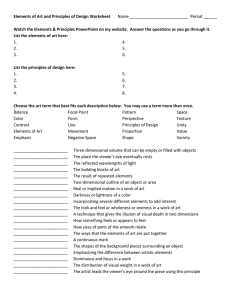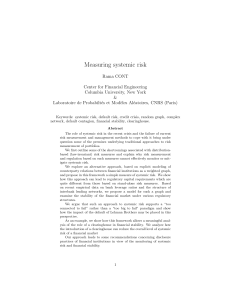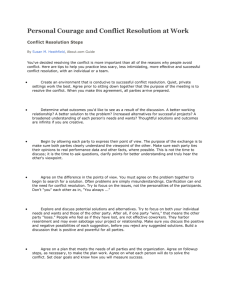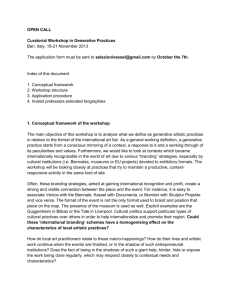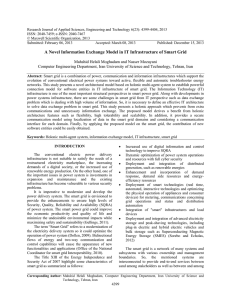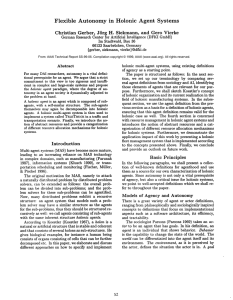Social Systems Theory
advertisement
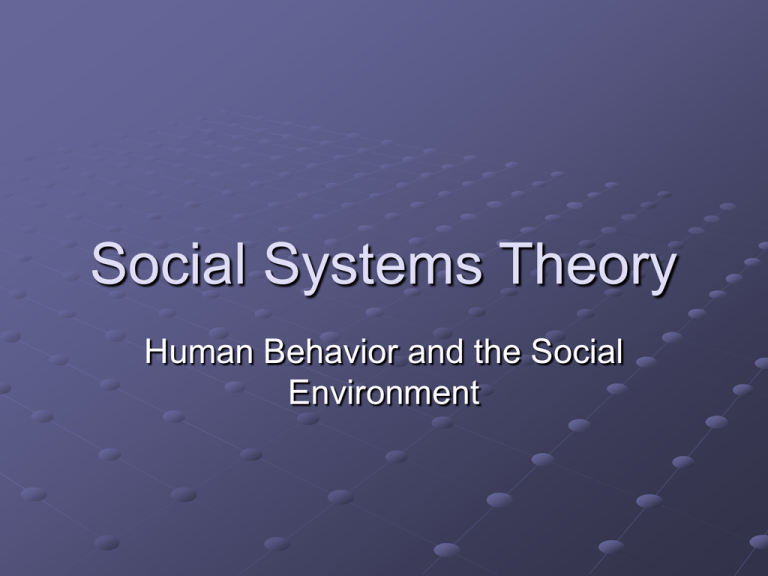
Social Systems Theory Human Behavior and the Social Environment Characteristics It is comprehensive It offers greater potential for description and integration of disparate theories into a single framework that any other framework. It provides suggestive leads For all sectors of human behavior It has the potential to provide a common language. Parsimony It allows the reduction of theories to a framework that can be mastered. Providing Meaning to Theory General systems theory, which includes the narrower field of social systems, is a crossdisciplinary body of scientific thought that developed during the twentieth century. Social systems perspective: a philosophical viewpoint on the relationship of person with their social environment. Social systems model: meaning that it is at the same time a hypothesis to be tested, primarily through its application to professional practice. Systems perspective provides the best theoretical basis for the study of human communication. Systems/Systemic Thinking System: A set of things or parts forming a whole. A complex unity formed of many often diverse parts subject to a common plan or serving a common purpose. Systemic Thinking: Using the mind to recognize pattern, conceive unity, and form some coherent wholeness – to seek to complete the picture. Systems consists of elements that are capable of being understood. Systemic thinking includes those ways of thinking that seek to understand coherence and connectedness of all life. Thought is patterned and imposed on the world as experienced by the perceiver. Comprehension of the part/whole nature of life is the central tenet of systemic thinking. A social system is composed of persons or groups of persons who interact and mutually influence each other’s behavior. A social system is a bounded set of interrelated activities that together constitute a single entity. Polar Positions Systems exist at all levels: Persons Families Organizations Communities Societies Cultures What is a basic unit of a social system? Macro vs. Micro Whole vs. Part Holistic Viewpoint: The whole determines the actions of its parts. People are determined by society. Atomistic Viewpoint: The whole is the sum of its parts Persons determine the society. The holistic view implied “downward” causality, while the atomistic view implied “upward” causality. Agree? Disagree? These two positions are important and powerful when applied to the task of deciding how to intervene in human behavior. This duality has emerged within our profession as the historical distinction between “casework” and “community organization”, or as “individual change” vs. “social change”. This duality is inherent in other social/behavioral disciplines, most explicitly in the paradigm of “nature vs. nurture”. Both polar positions are relevant and must be considered when examining human affairs. Holon Each social entity whether large or small, complex or simple, is a holon. This term is borrowed from Greek language to express the idea that each entity is simultaneously a part and a whole. A social unit is made up of parts to which it is the whole (suprasystem) and at the same time is part of some larger whole (component). What is central is that any system is by definition both part and whole. Focal system: The system chosen to receive primary attention. Identifies the perspective from which the observer views, and analyzes the system and its environment The idea of holon then requires the observer to attend to both the components of that focal system and the suprasystem (significant environment) to fully understand it. Social System Theory is “holonistic” requiring: Specification of the focal system Specification of the units or components that constitute that holon Specification of the significant environmental systems Specification of one’s own position relative to the focal system. Energy/Information The basic “stuff” of a system is energy. Energy can be in the form of information and resources. System action can be understood as the movement of energy/information: Within a system Between as system and its environment Information is ingested as energy to the same extent that food fulfills biological needs. What occurs in and between social systems are “transfers of energy/information” between persons or groups of persons. Energy is defined as: Capacity for action Action Power to effect change Energy and information are not identical. Energy must be structured in order to be useful. Information gives form to the energy. Energy derives from a complex of sources including the physical capacities of its members; social resources such as loyalties, shared sentiments, and common values; and resources from its environment. Energy sources for personality systems: Food The physical condition of the body Intellectual and emotional capabilities Emotional support from friends, family or colleagues Cultural and religious sanctions for one’s beliefs and activities Recognition of one’s status by society and one’s colleagues in an organization One’s sense of self-worth and integrity. Entropy and Synergy The tendency of an unattended system to move toward an unorganized state that is characterized by decreased interactions among its components. Entropy is a measure of the quantity of energy not available for use. Examples: He’s not performing up to his potential What a waste of talent Synergy refers to increasingly available energy within a system derived from heightened interaction among its components. Examples: She’s got it all together, and look at the results Out of many, one (E pluribus unum) Synergy occurs in open, living systems. The Four Basic Energy Functions Systems require energy in order to exist. There are four basic energy functions that are essential to carry out a system’s purposes: Securing energy from the environment Securing energy internally Goal attainment outside the system Goal attainment within the system External (environmental) Internal (components) SE SI GE GI The four functions (SI, SE, GI, GE) are not separate; a system performs all of these functions at the same time. In any exchanges between whole and parts, all elements receive some energy and have some goals met. The reciprocal nature of the transactions and exchanges should be kept in mind. If one function is always dominant, the other functions are neglected, to the detriment of the total system. Example: The family system that concentrates energy only on the SE function may experience internal disintegration. “latch-key kids” Organization Even if energy is available in and to a system, if there is a total absence of organization then there is a total absence of system. Absence of organization equals entropy. Organization refers to the grouping and arranging of parts to form a whole in order to put a system into “working order.” System organization secures, expends, and conserves energy to maintain the system and further its purposes. If the task of energy organization is not accomplished, then the system will fail to develop. Organization is not synonymous with higher levels of complexity. The measure of effectiveness of organization is its capacity to fulfill the system’s goals, as well as the goals of its components. Disorganization of a system – whether person, family, or neighborhood – does not mean totally unorganized; it means not sufficiently organized. Families with problems are generally disorganized families, and the reasons for this disorganization can emanate from internal sources and/or external forces: The goals of one or more members are in opposition to system goals. The elements of organization are disrupted or unclear. Energies from within the system are not available or not sufficient for the demands on the system. The family is not adequately organized to obtain additional energy from outside its own system. The environment exercises a disorganizing influence on the family system (oppression). Energy is denied or not available from the suprasystem (unemployment; or having welfare benefits cut off.). Causation, Feedback Loops, and Chaos Theory It is not useful to understand human behavior through searching for linear, one-directional cause-effect relationships. It serves little purpose to ask “why” persons do what they do. A more useful inquiry is “how” or in what way something happened. “A interacts with B to produce AB, which changes both A and B, and results in C, which is partly A, B, and AB.” The process in which a system receives internal or environmental responses to its behavior and, in turn, reacts to these received responses by accommodating and assimilating the energy/information received, by altering the system’s structure, and then engaging in altered exchanges of energy/information. The fundamental concept in chaos theory is order vs. disorder. Energy that is completely flat, unorganized, and undifferentiated is in a state of disorder. Systems and subsystems which are maintained only by great effort and only by intense energy exchange internally and with their environment is an example of order.

